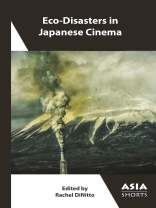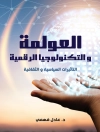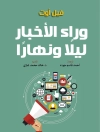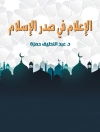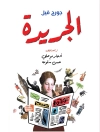Eco-Disasters in Japanese Cinema explores disaster as a powerful means for addressing environmental crises. It is the first volume dedicated to a multi-genre analysis of environmental themes in Japanese cinema. The films examined cover 1954-2020 and include documentaries, monster films, cult films, studio blockbusters, and activist cinema. The chapters highlight important moments in disaster ecocinema, introduce films not well known outside of Japan, and analyze films not previously read through an environmental lens. Chapters are organized under intersecting themes that address the slow and fast violence of local and planetary environmental destruction: toxicscapes, contaminated futures and childhoods, nuclear anxiety and violence, and ruined and apocalyptic landscapes. This volume showcases a range of directors, eras, audiences, and genres and illustrates the profound diversity of Japanese films that feature systemic assaults on the environment.
表中的内容
Contents
Introduction — Rachel Di Nitto
Toxicscapes
1. Temporality and Landscapes of Reclamation: Johnny Depp Goes to Minamata — Christine L. Marran
2. Hedorah vs. Hyperobject; or Why Smog Monsters Are Real and We Must Object to Object-Oriented Ontologies — Jonathan Abel
3. The Toxic Vitality of Kiyoshi Kurosawa’s Charisma — Rachel Di Nitto
4. Plastic Garbage in Kore-eda Hirokazu’s Air Doll — Davinder L. Bhowmik
Contaminated Futures and Childhoods
5. Environmental Anxiety and the Toxic Earth of Space Battleship Yamato — Kaoru Tamura
6. Miyazaki Hayao’s Eco-Disasters in Japanese Cinema: Rereading Nausicaä — Roman Rosenbaum
7. You Can (Not) Restore: Ecocritique and Intergenerational Ecological Conflict in Evangelion — Christopher Smith
8. Jellyfish Eyes (2013) and the Struggle for Reenchantment — Laura Lee
Nuclear Anxiety and Violence
9. The Reimagination of Godzilla: The Concealment of Nuclear Violence — Shan Ren
10. The Walking Nuclear Disaster: Nuclear Terrorism and the Meaning of the Atom in The Man Who Stole the Sun — Eugenio De Angelis
11. Representing the Unrepresentable: Hibakusha Cinema, Historiography, and Memory in Rhapsody in August — Adam Bingham
12. Hibakusha Film as Genre, and the Slow Violence Depicted in Morisaki Azuma’s Nuclear Gypsies — Jeffrey Du Bois
13. Nuclear Visuality and Popular Resistance in Kamanaka Hitomi’s Eco-Disaster Documentaries — Andrea Gevurtz Arai
Ruined and Apocalyptic Landscapes
14. Diverging Imaginations of Planetary Change: The Media Franchise of Japan Sinks — Hideaki Fujiki
15. Technology, Urban Sprawl, and the Apocalyptic Imagination in Hiroyuki Seshita’s BLAME! (2017) — Amrita S. Iyer
16. Stranded among Eternal Ruins: Three Films about “Fukushima” — Aidana Bolatbekkyzy
17. Disaster and the Landscape of the Heart in Asako I & II (2018) — Dong Hoon Kim
List of Films Discussed in This Volume
About the Editor and Contributors
关于作者
Rachel Di Nitto is a Professor of Japanese literary and cultural studies at University of Oregon, with a focus on the nuclear environmental humanities. She researches contemporary cultural production (literature, film, manga) about the 2011 triple disaster in Japan. Her book,
Fukushima Fiction: The Literary Landscape of Japan’s Triple Disaster won the Choice Magazine Outstanding Academic Title in 2020. She has published on the films of this disaster and postwar Japan. See her work in The Asia-Pacific Journal, Japan Forum, and her chapter “Toxic Interdependencies: 3/11 Cinema” in The Japanese Cinema Book. She is working on a new environmental humanities monograph titled ‘Environmental Echoes and Nuclear Traces’ that pairs post-Fukushima fiction with novels and short stories from earlier eras of environmental and nuclear harm.
